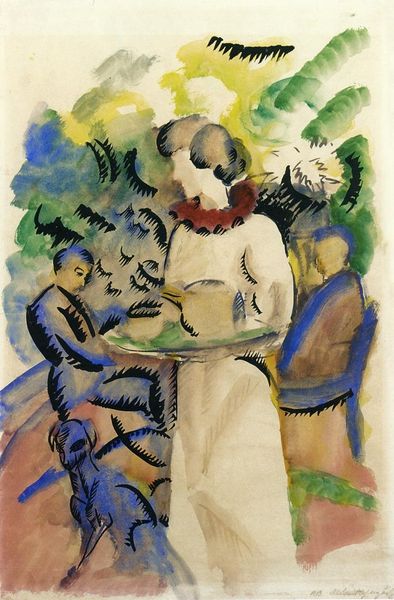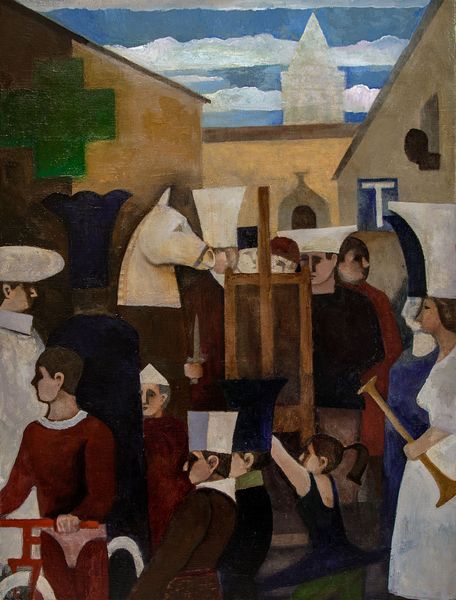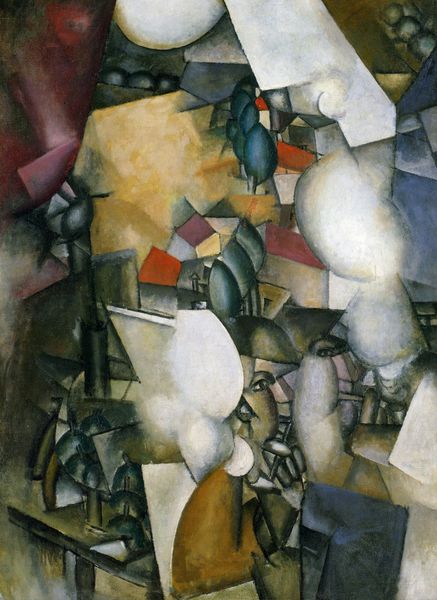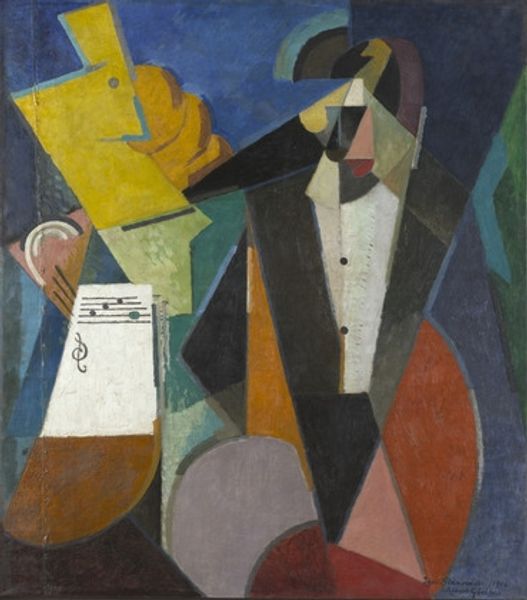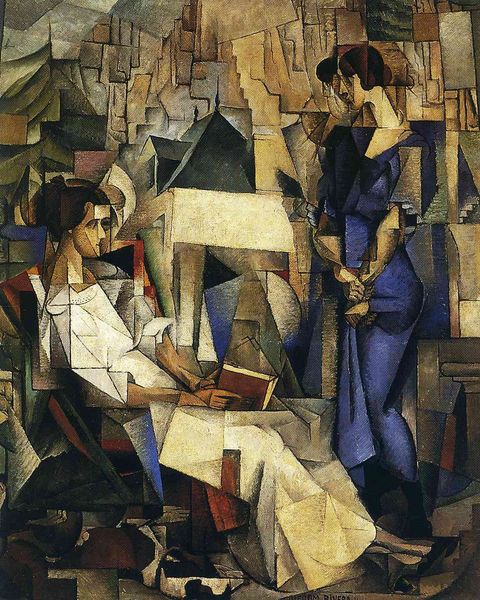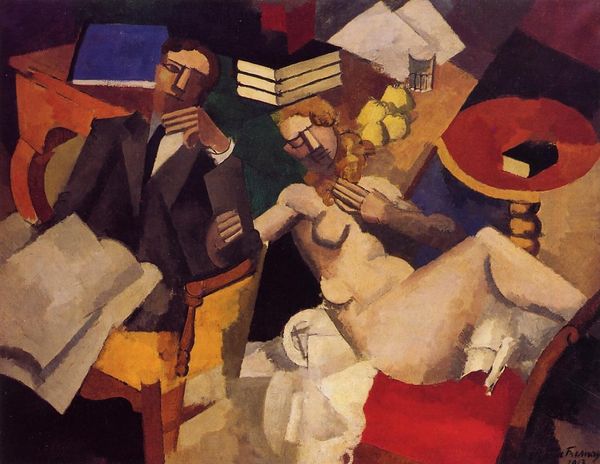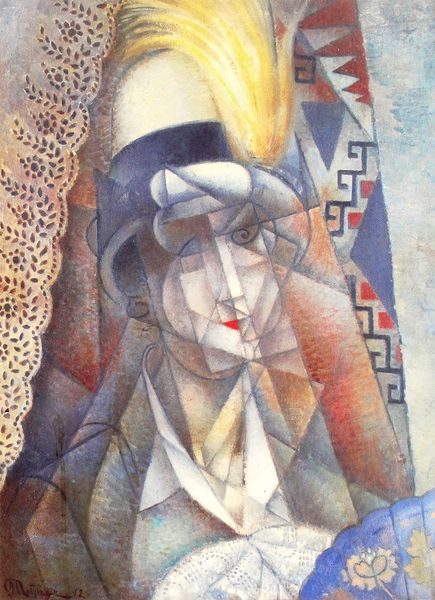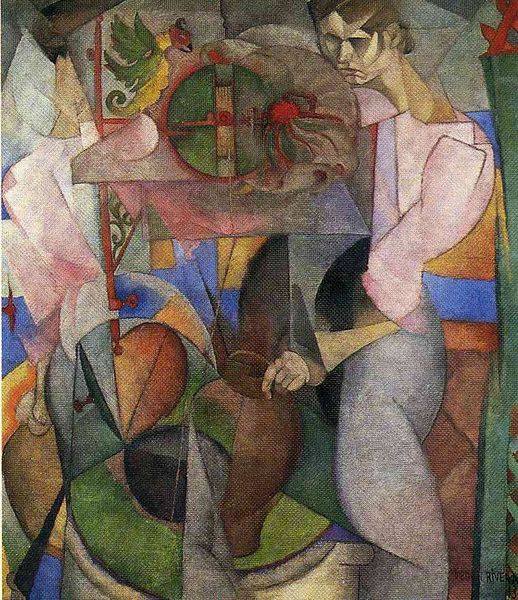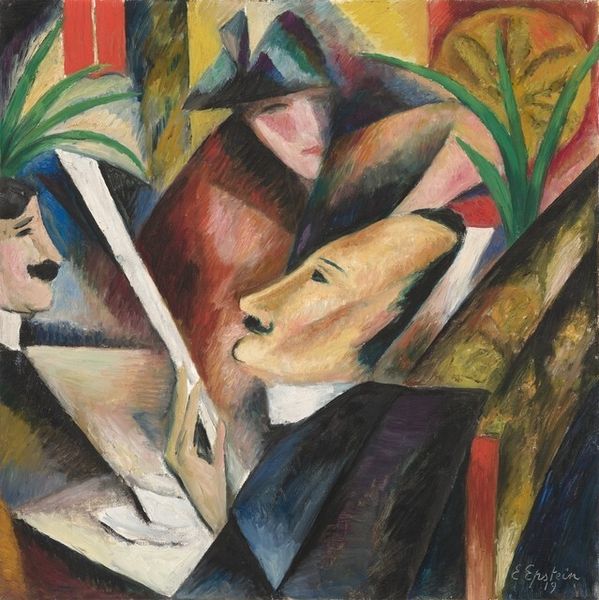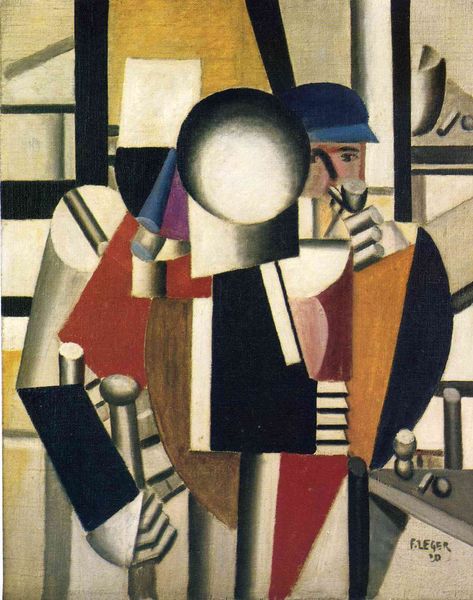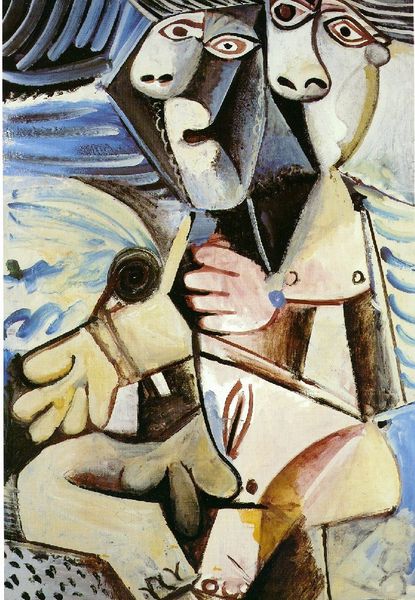
painting, oil-paint
#
portrait
#
cubism
#
art-nouveau
#
painting
#
oil-paint
#
figuration
#
oil painting
#
neo expressionist
#
group-portraits
Copyright: Public domain
Editor: This is "Tea Time," painted by Alice Bailly around 1920. The subdued color palette makes it feel…intimate, despite the slightly fragmented, cubist-style figures. It feels very much like a moment frozen in time. What strikes you most about it? Curator: It's interesting to see how Bailly merges the domestic, intimate setting of a tea party with the avant-garde language of Cubism and even touches of Art Nouveau. These were movements grappling with representation and modern life. How do you think the context of post-World War I Europe might inform this depiction of leisure? Editor: That's something I hadn't really considered! It almost seems like there's a tension – a desire to return to normalcy, maybe even elegance, juxtaposed with the undeniable fracturing of reality. The faces are there, but almost masked… Curator: Precisely! Consider the role of women during and after the war. Bailly presents them not just as objects of domesticity, but almost as performers, veiled, engaging in rituals. Think about the politics of social gatherings during the interwar years; they were incredibly charged spaces. Does that change how you view this scene? Editor: Absolutely. It feels much less straightforward. The fragmented figures no longer read solely as an artistic choice, but perhaps also as a commentary on fractured identities or the changing roles of women in society. Curator: Exactly! By blending different stylistic vocabularies and focusing on such an everyday activity, Bailly seems to open up the space for discussions about social and cultural shifts in the post-war world and who gets represented, and how, within those power dynamics. Editor: I think that makes the piece infinitely more interesting! Thanks; I had not made the link with social changes, only technique. Curator: It’s always a combination! Art doesn't exist in a vacuum. Understanding the social and political contexts always adds another layer of meaning.
Comments
No comments
Be the first to comment and join the conversation on the ultimate creative platform.
